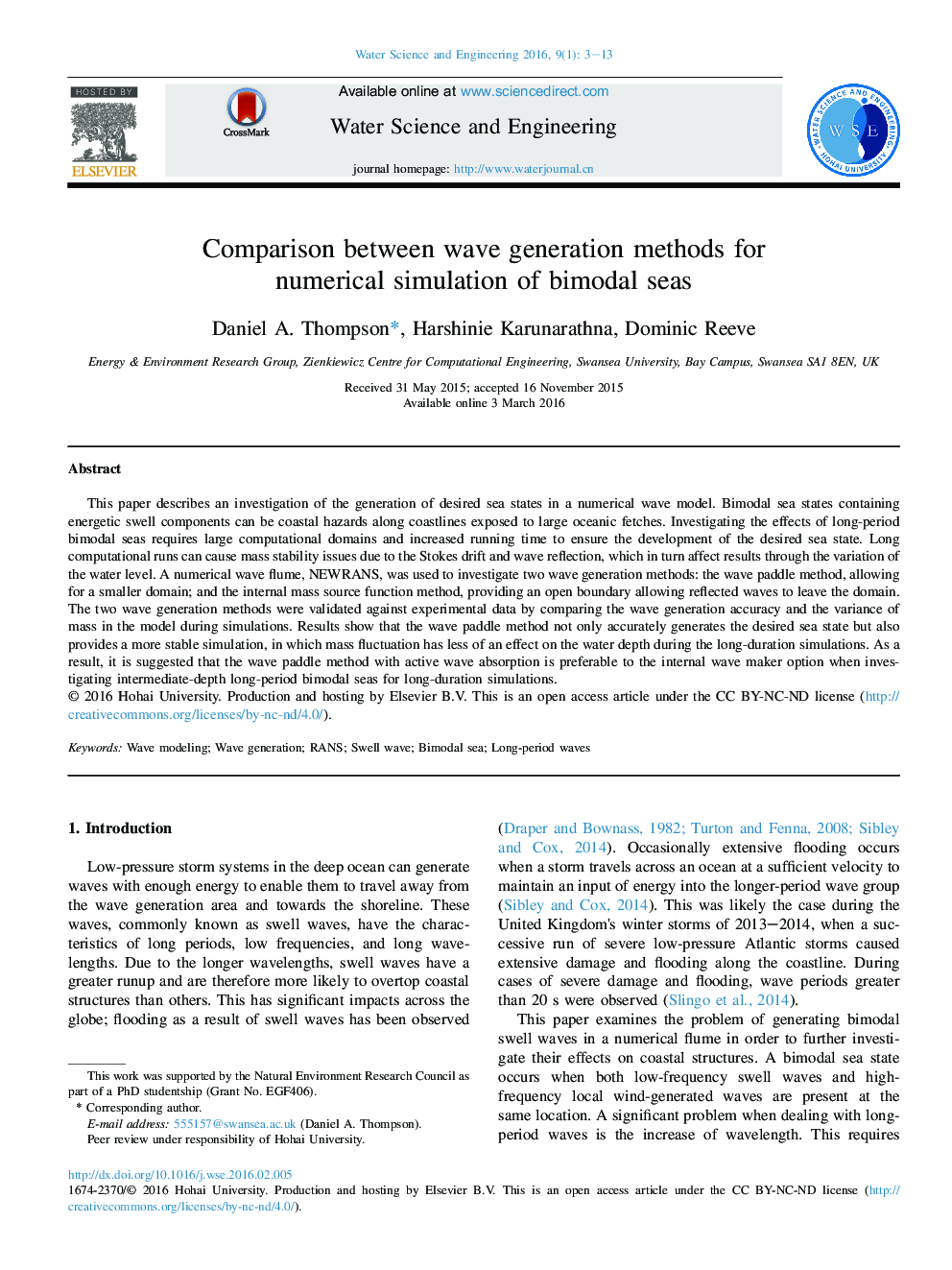| Article ID | Journal | Published Year | Pages | File Type |
|---|---|---|---|---|
| 494414 | Water Science and Engineering | 2016 | 11 Pages |
This paper describes an investigation of the generation of desired sea states in a numerical wave model. Bimodal sea states containing energetic swell components can be coastal hazards along coastlines exposed to large oceanic fetches. Investigating the effects of long-period bimodal seas requires large computational domains and increased running time to ensure the development of the desired sea state. Long computational runs can cause mass stability issues due to the Stokes drift and wave reflection, which in turn affect results through the variation of the water level. A numerical wave flume, NEWRANS, was used to investigate two wave generation methods: the wave paddle method, allowing for a smaller domain; and the internal mass source function method, providing an open boundary allowing reflected waves to leave the domain. The two wave generation methods were validated against experimental data by comparing the wave generation accuracy and the variance of mass in the model during simulations. Results show that the wave paddle method not only accurately generates the desired sea state but also provides a more stable simulation, in which mass fluctuation has less of an effect on the water depth during the long-duration simulations. As a result, it is suggested that the wave paddle method with active wave absorption is preferable to the internal wave maker option when investigating intermediate-depth long-period bimodal seas for long-duration simulations.
